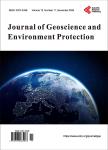Assessment of Runoff, Sediment Yields and Nutrient Loss Using the Swat Model in Upper Indus Basin of Pakistan
Assessment of Runoff, Sediment Yields and Nutrient Loss Using the Swat Model in Upper Indus Basin of Pakistan作者机构:Key Laboratory of Mountain Hazards and Surface Process Institute of Mountain Hazards and Environment Chinese Academy of Sci-ences Chengdu China University of Chinese Academy of Sciences Beijing China School of Architecture Neijiang Normal University Neijiang China School of Management Northwestern Polytechnical University Xi’an China Key Laboratory for Space Biosciences & Biotechnology School of Life Sciences Northwestern Polytechnical University Xi’an China Department of Civil Engineering International University of Business Agriculture and Technology Dhaka Bangladesh
出 版 物:《Journal of Geoscience and Environment Protection》 (地球科学和环境保护期刊(英文))
年 卷 期:2020年第8卷第9期
页 面:62-81页
学科分类:08[工学] 081501[工学-水文学及水资源] 0815[工学-水利工程]
主 题:Sediment Transport Runoff GIS SWAT Model Hydrological Modelling Nu-trient Loss
摘 要:The main objective of this study is to understand the runoff, sediment yield and water quality of the Upper Indus River Basin of Pakistan. To achieve this goal, specific objectives have been met which include, setup of a hydrological model using Soil and Water Assessment Tool (SWAT) then calibration and validation of the hydrological model using river discharges and in the end investigating the performance of the hydrological model by SWAT. This research will have great impacts on socio-economic conditions of Pakistan because study of upper Indus River basin is imperative to provide data needed for its management, and to warrant that it is sustainable to support the increasing population and conservational flows. A set of programmable mapping components MapWindow Geographic Information System (GIS) was used which is an open source GIS based mapping application. It is SWAT used spatially distributed information on elevation, land use, slope and soil. The program Sequential Uncertainty Fitting ver.2 (SUFI-2) in a combination of uncertainty analysis and calibration of outputs was used in SWAT-CUP. SWAT model used input data, which have climate information to obtain results. The observed climate data of temperature gauges and rain gauge were used as input in the SWAT model;the calibration results for three discharge stations were produced. The initial P-factor value was satisfactory but more iteration to attempt narrow uncertainty band with improving goal function, resulted in small percentage of observed data within uncertainty band. A warm up period of three years (1979-1982) was used for simulation of SWAT model. The model was calibrated for selected three catchments for the period 1982-2000 and validated for period 2001-2010. Results are quite comparable with the observed flows.



